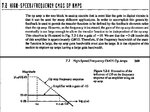Junus2012
Advanced Member level 5

Hello
during the design of the Op-amp we consider only the DC gain and we said it is our gain. but as you all know that this gain is decreasing very fast with frequency so how we will sure about the accuracy of the closed loop op-amp at littoral high frequently where the gain here is not so hign
take the example of the unity gain buffer to explain this issue please
Regards
during the design of the Op-amp we consider only the DC gain and we said it is our gain. but as you all know that this gain is decreasing very fast with frequency so how we will sure about the accuracy of the closed loop op-amp at littoral high frequently where the gain here is not so hign
take the example of the unity gain buffer to explain this issue please
Regards





